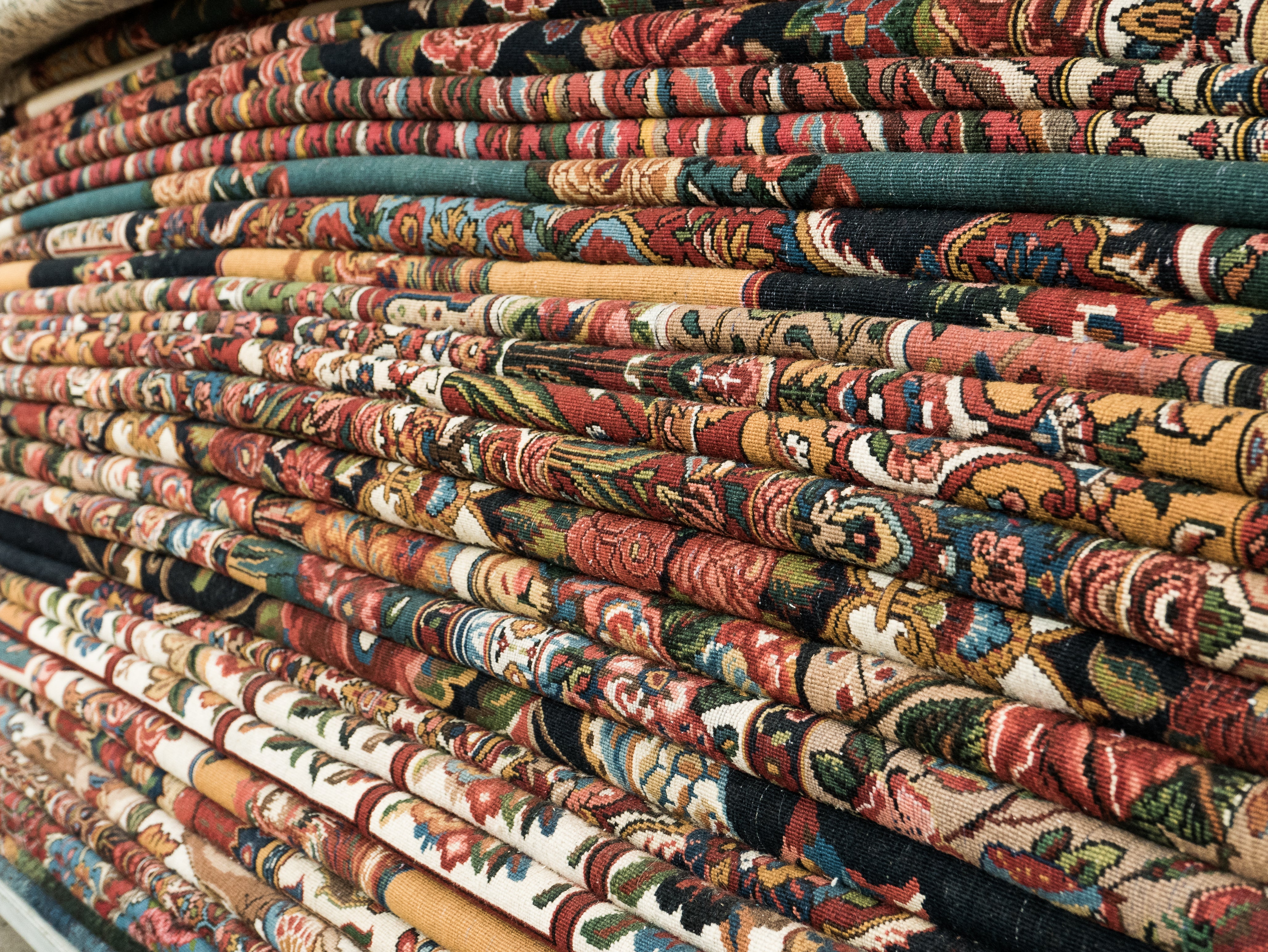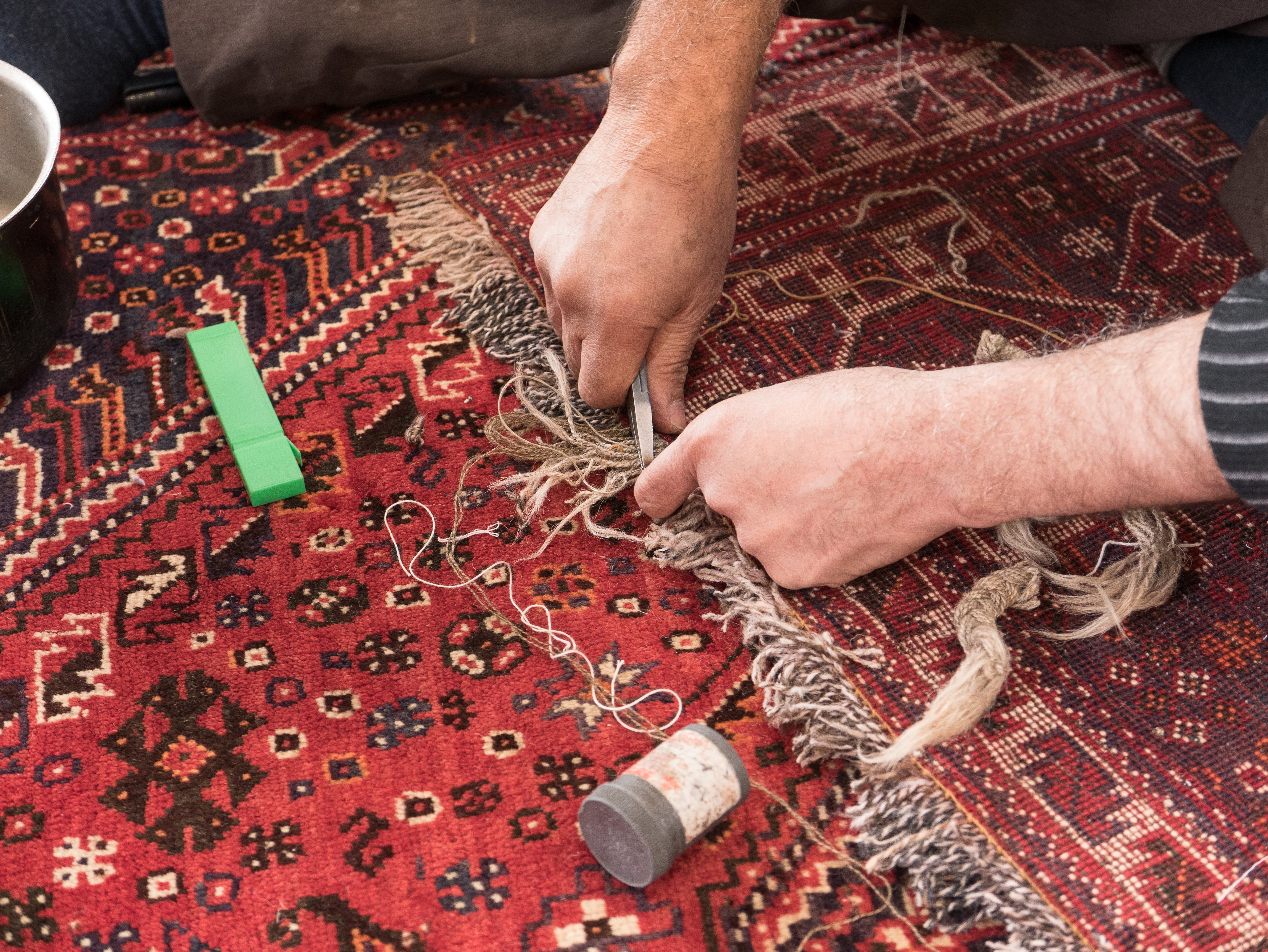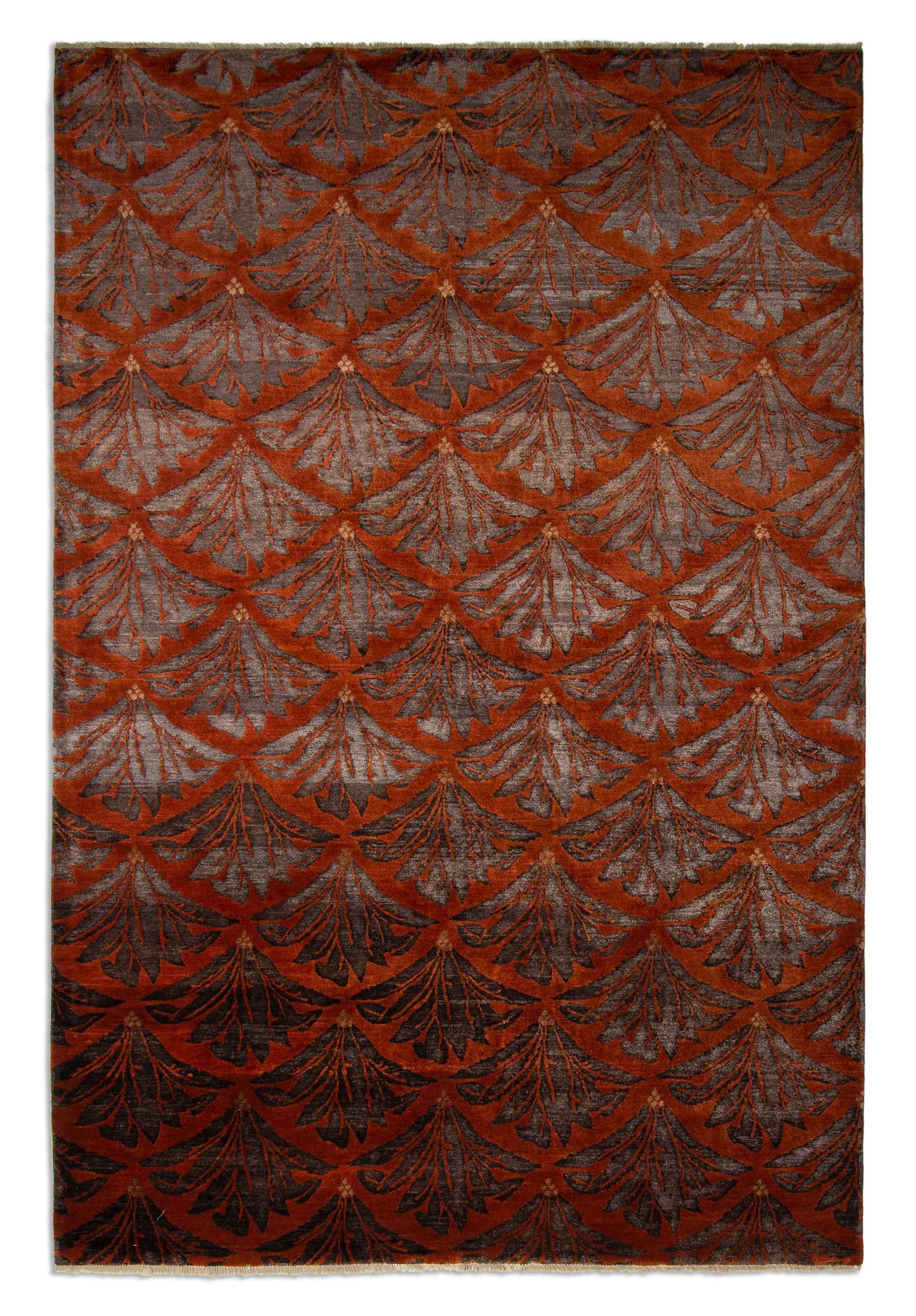
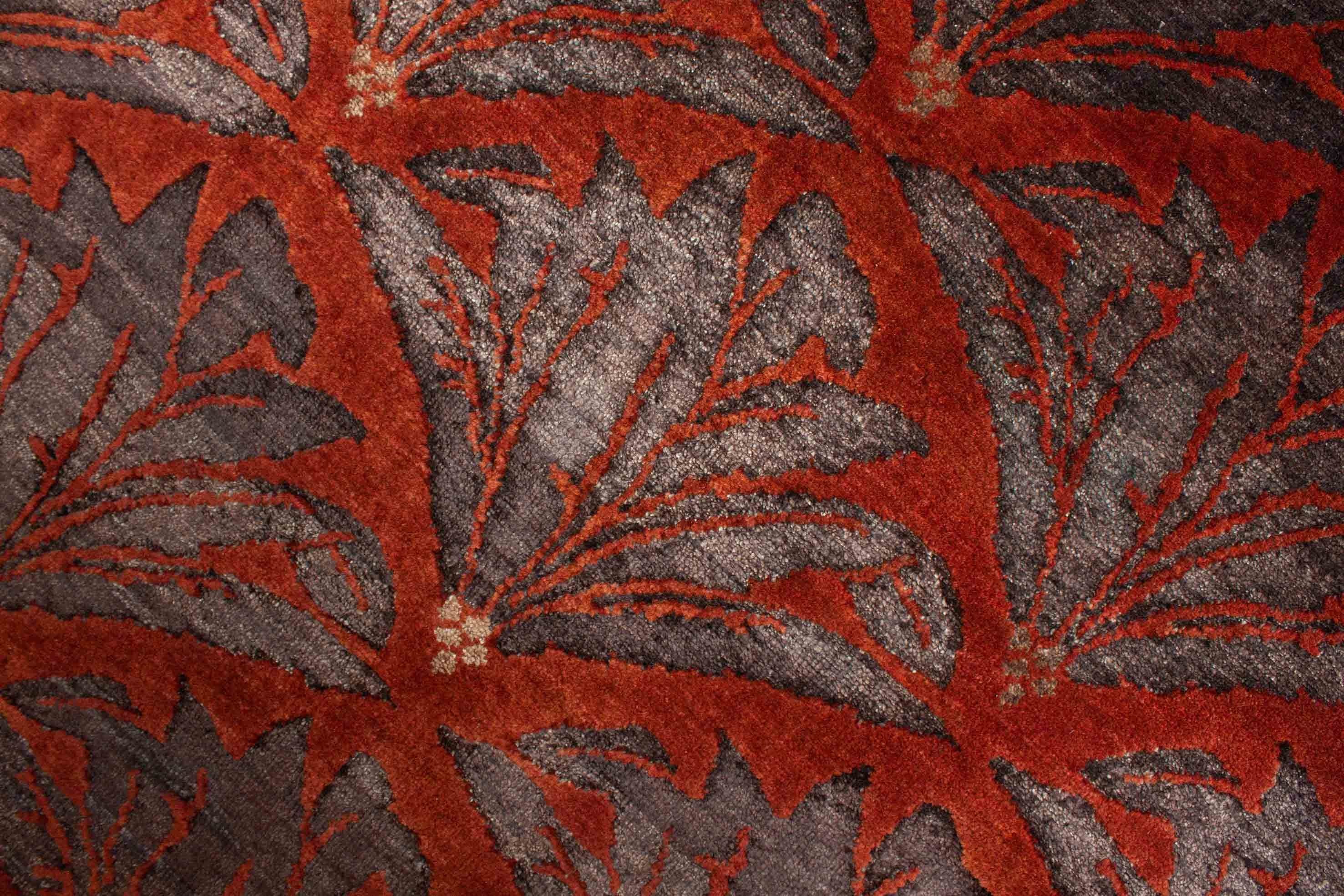
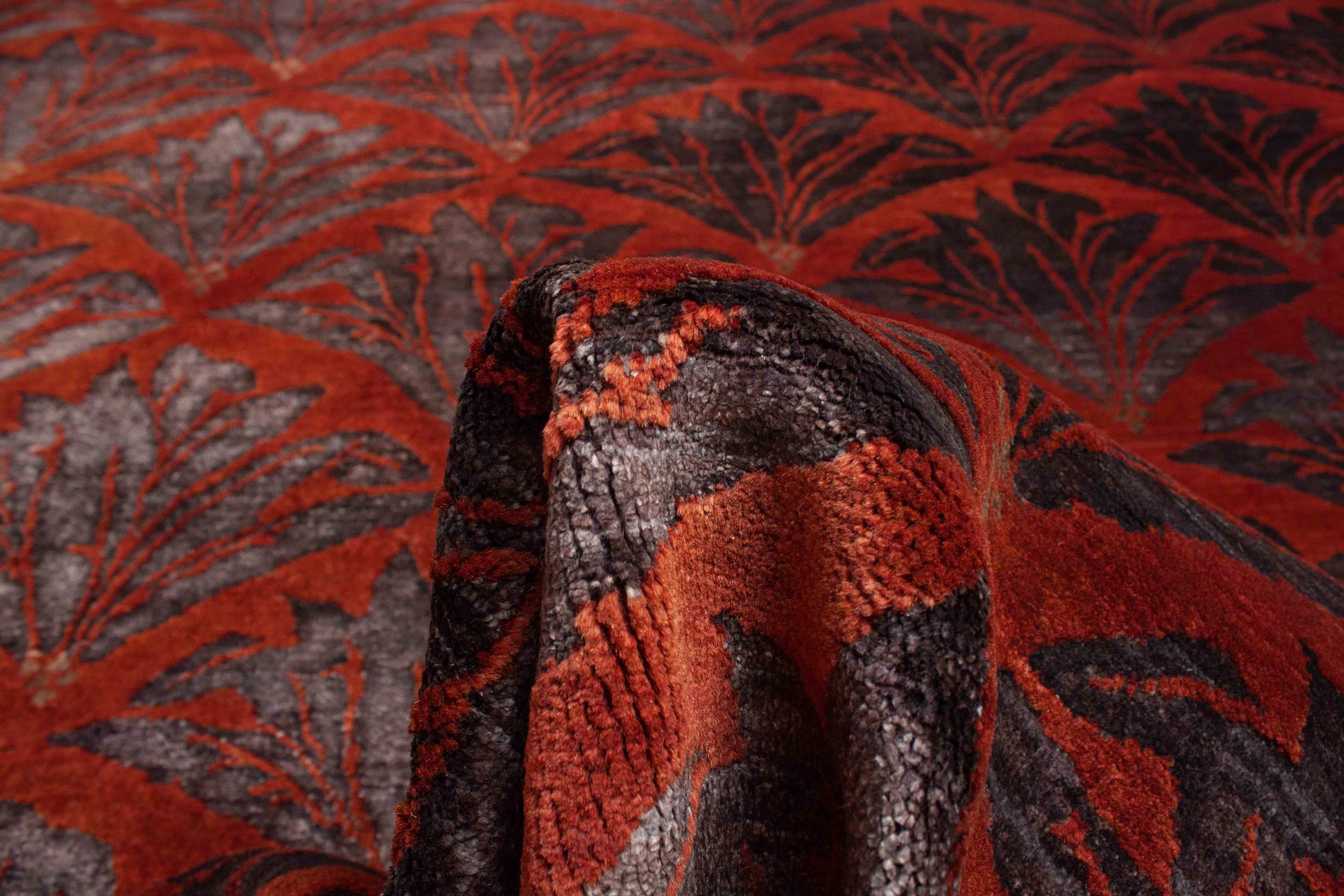
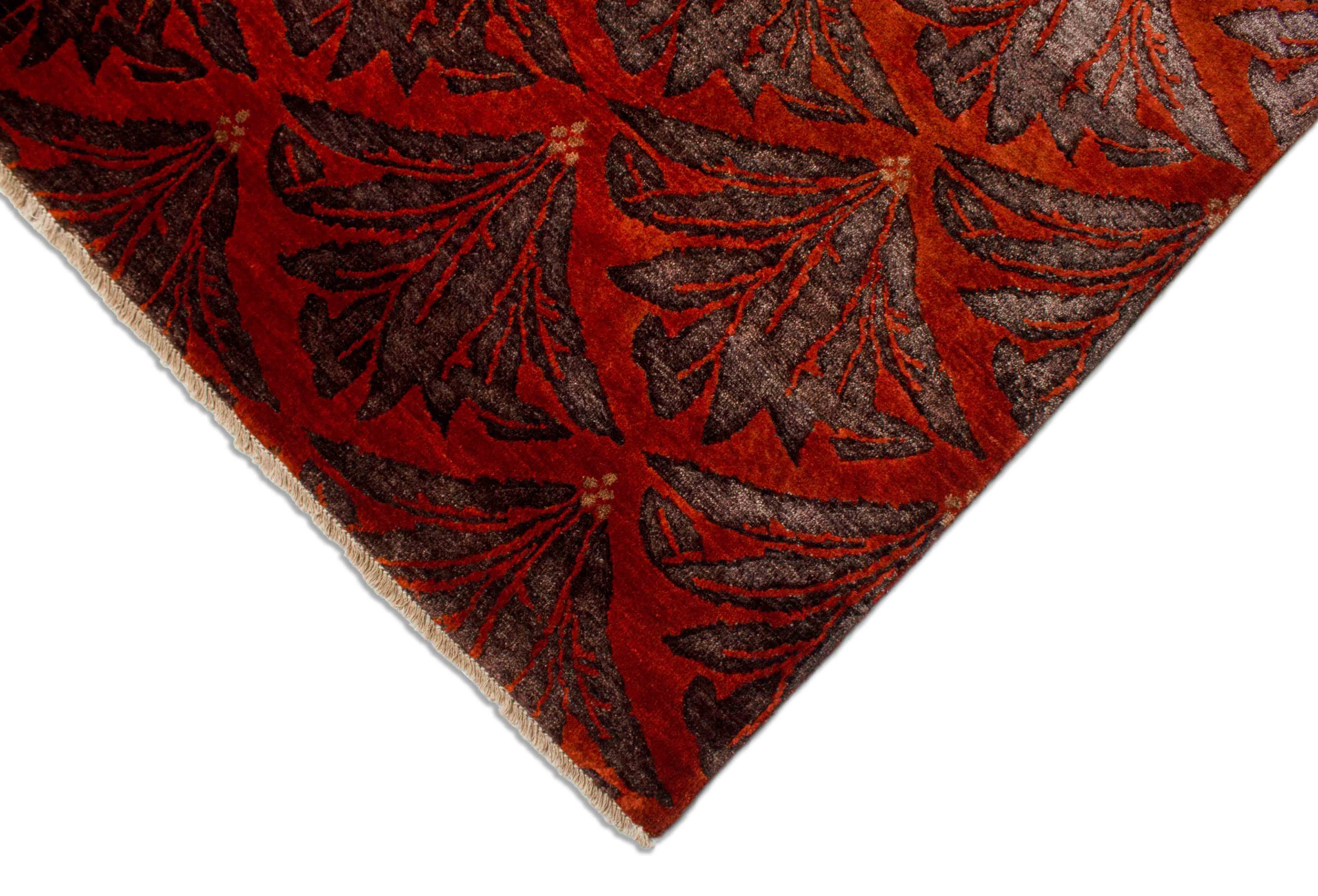
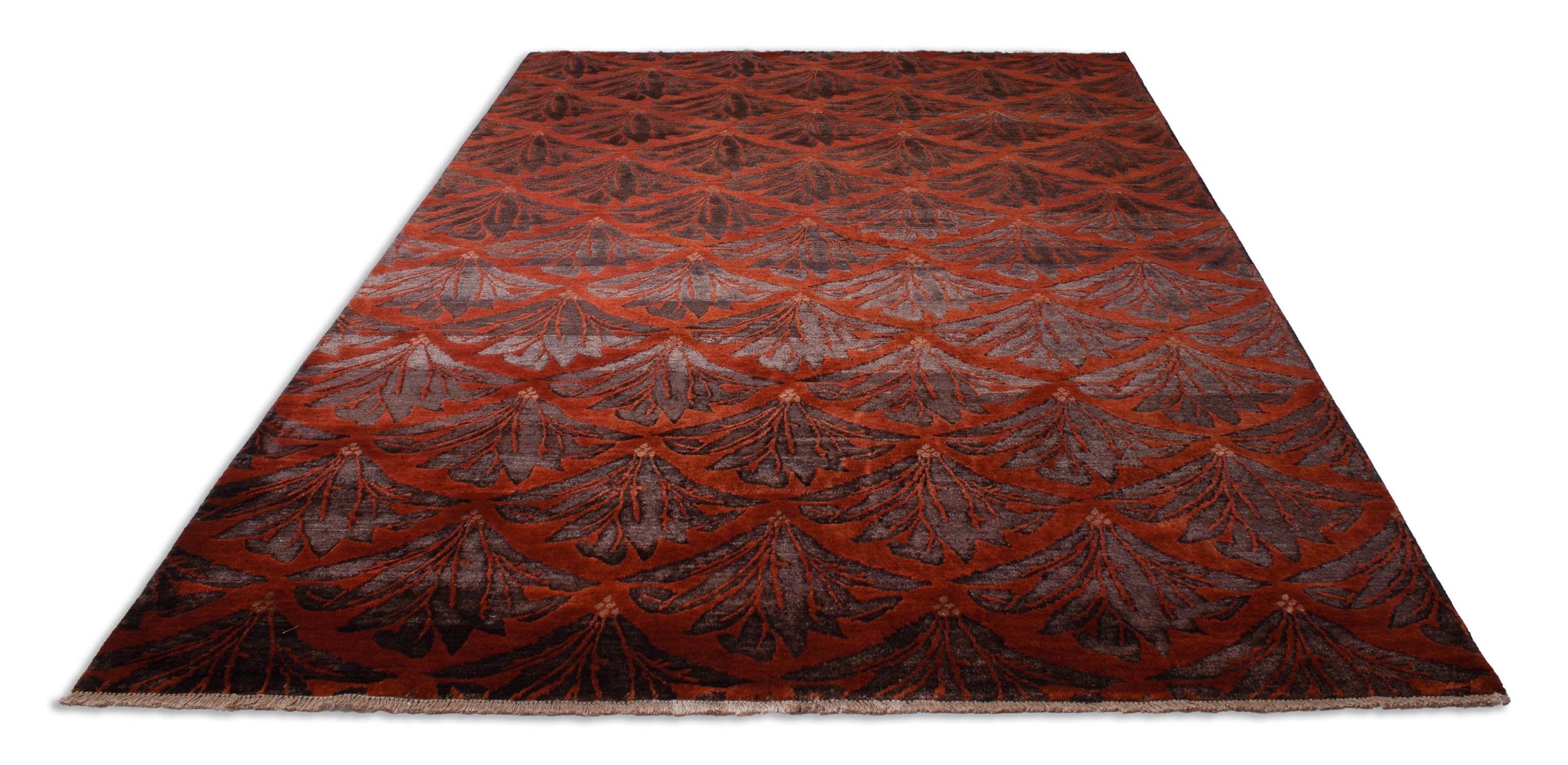
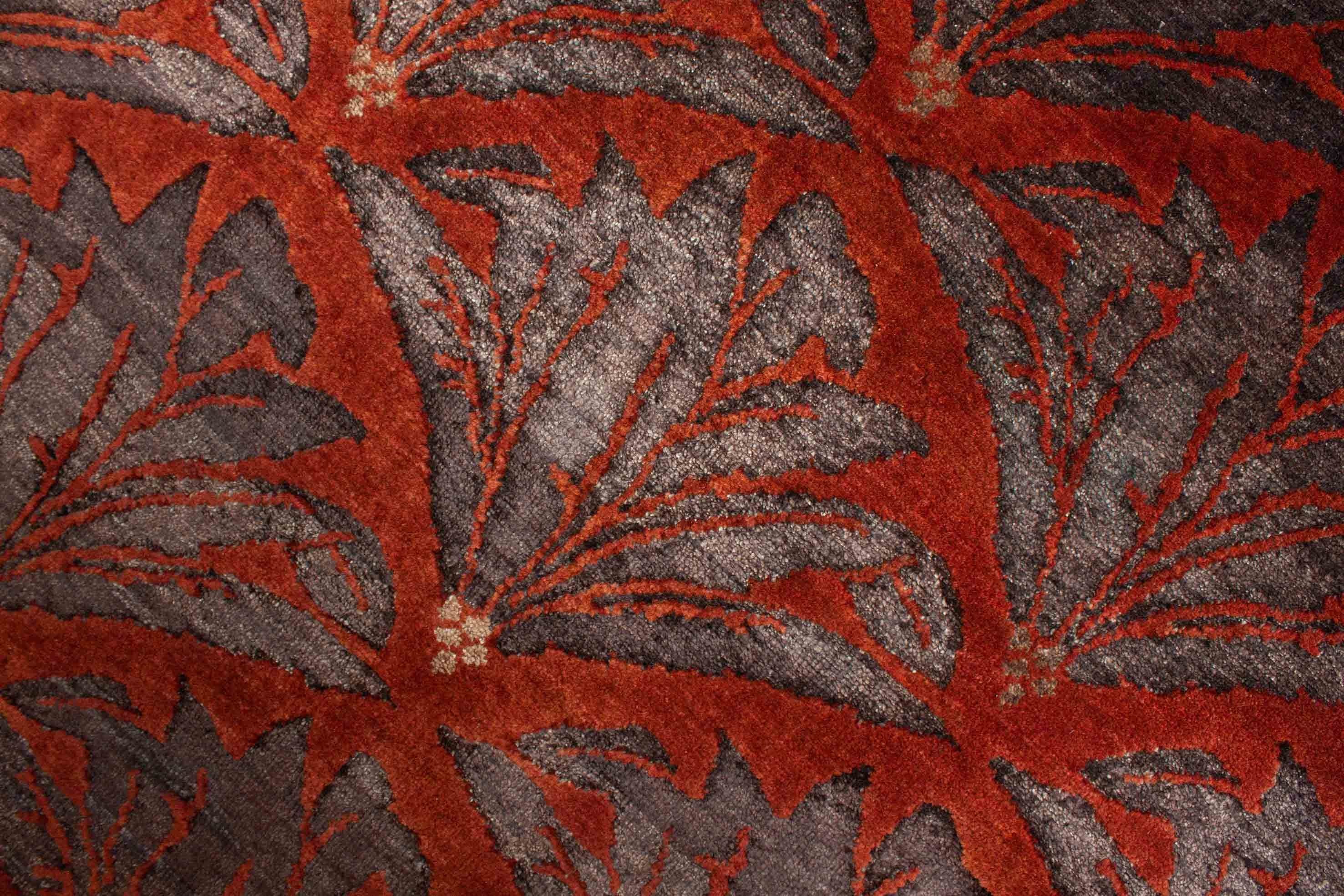
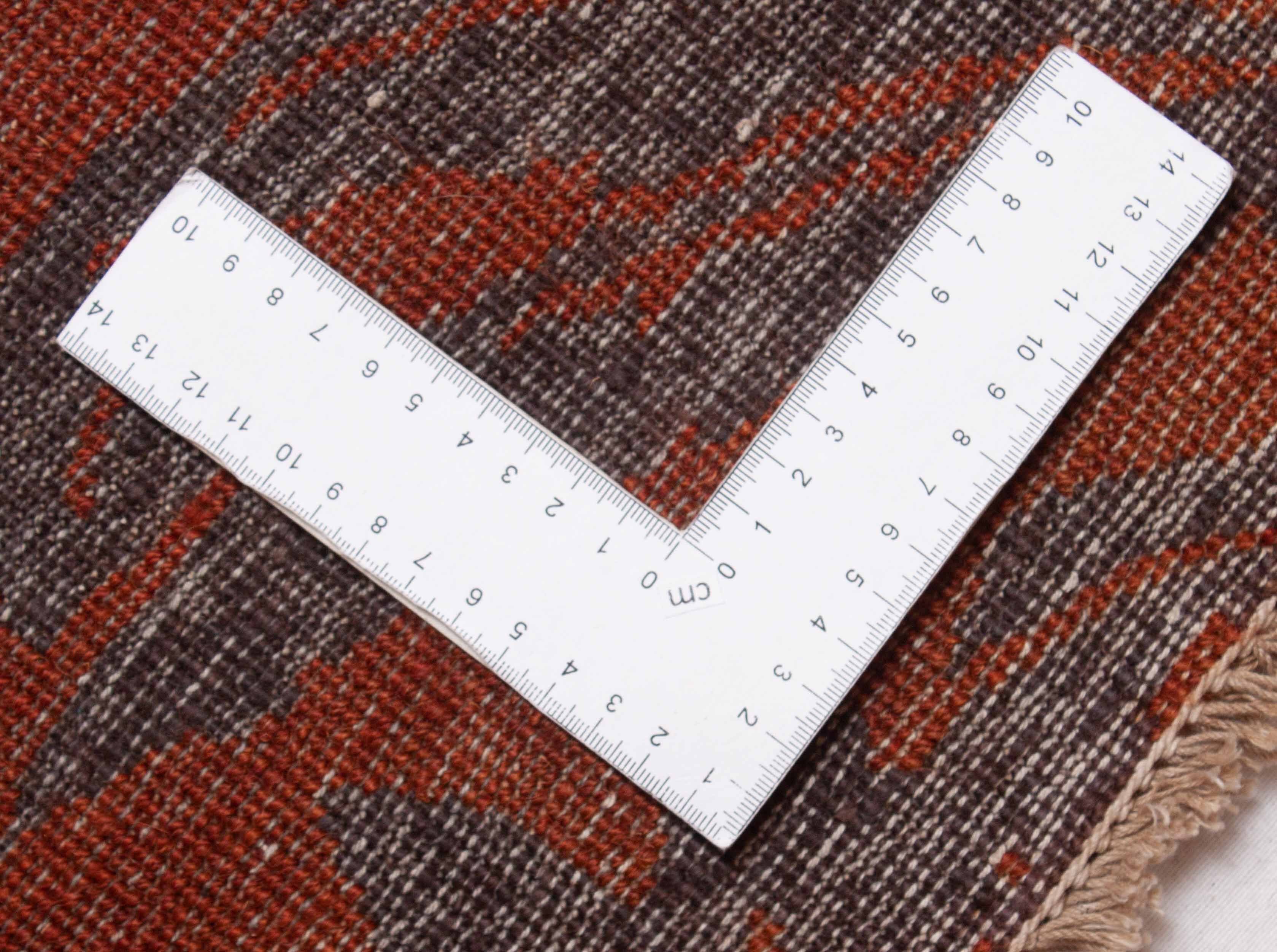
Tapis
303 cm x 201 cm
Nr. 18227
Floral Tapis, rusty red
| Place of origin | Indien |
| Size | 303 cm x 201 cm (= 6.09 qm) |
| Manufacturing | hand knotted |
| Material | Flor: wool (handspun, natural dyes) & viscoseWeft & Warp: cotton |
| Knots/m2 | 120.000 |
| Pile height | 10mm |
| Condition | new |
| Coloring | rusty red, dark gray |
| Edition | Single piece |
Place of origin
Classic floral ornaments combined with contemporary aesthetics: we were inspired by the flowery pattern of French tapestry rugs when creating this hand-knotted Tapis.
We have modified and reduced the traditional ornaments and, in particular, we have completely rearranged the colors. The result is a fusion of traditional rug design and modern European aesthetics. We try to cater to the trends of European interior design with our Tapis Design and, in doing so, we playfully go around the guidelines of traditional rug knotting.
Patterns
The luxuriant flower motifs of this Tapis are elegant and varied. The graceful vegetative symbols representing flowers, leaves and branches are artfully intertwined.
The repeating elements in the center field of this Tapis rug have no specific center (so-called repeating pattern). The repeating pattern has a calming but not boring effect. Rugs with repeating patterns are also called patterned.
Some areas of the design have a higher pile than other parts of this rug. The patterns of modern rugs tend to be simpler and more abstract. The play with different pile heights is new and has replaced more elaborate and bold patterns. As a result of the two-dimensional highlighting of the pattern, the rug does not look boring at all. This accentuation is extraordinary and has a unique effect.
The background of this Tapis is rusty red.
Material
The pile of this Tapis is made of a durable mixture of handspun wool and viscose.
Viscose also acetate silk or rayon is basically obtained from the natural product, cellulose, i.e. from the raw material of wood. In India, the cellulose mass is obtained from bamboo. In an elaborate process, the pulpy cellulose is pulled into a continuous textile yarn. This is why viscose is also known as continuous filament yarn. Because of the silky sheen of the yarn, viscose obtained from bamboo is also called "Bamboo Silk". The colloquial name "artificial silk" is not permitted under the German Textile Labelling Act TKG.
The technique used to process the wool for the pile of this Tapis is over 200 years old. The wool has been dyed with natural dyes and spun by hand. Dyeing with natural or vegetable dyes is more complicated, expensive and time-consuming than dyeing with chemical dyes. For a bright red, for example, you need about one kilogram of ground madder root as dye per kilogram of wool. For a strong, not too pale yellow, you need even two kilograms of the dye per kilogram of wool. Spinning the wool is also time-consuming and labour-intensive. In addition, fewer and fewer people are able to spin wool by hand.
But the effort is worth it; by dyeing with natural dyes, the high-quality wool retains its natural fat content. Wool dyed with natural dyes and spun by hand creates fascinating, iridescent patterns. The charm of hand-spun wool with its slight irregularities and natural shades unfolds in rooms that are furnished in a more traditional or country house style but also as a contrasting element in modern interiors.
The weft and warp threads of this Tapis are made of cotton. This versatile material is tear-resistant and stretchable and, therefore, ideal for a durable backing fabric.
Hinweis zu den Fotos
Kinderarbeit? Nein Danke.
Choose options







303 cm x 201 cm
Nr. 18227

